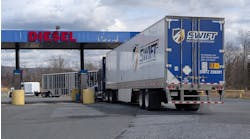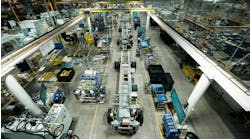When thinking of ports, many visualize smog, giant cargo ships, and dirty trucks. In reality, ports have become testing grounds for many clean and advanced technologies that now can be found throughout the transportation and freight industries. From low emission electric trucks to ships that plug in, ports throughout the world, especially in Southern California, have been instrumental in testing and demonstrating technologies to ready them for commercial maturity.
For the Ports of Los Angeles and Long Beach, adoption of cleaner technologies is a must as the two ports constitute the largest source of pollution in the South Coast Air Basin, generating about 10% of the region’s smog-forming emissions, according to the South Coast Air Quality Management District. The goods movement industry provides one of every nine jobs in the region, but it also contributes to the nation’s dirtiest air. Ports must find a balance to move more cargo while decreasing overall emissions.
The Port of Los Angeles has taken a big step in finding that balance with its recent announcement of the Pasha Green Omni Terminal Demonstration Project, a full-scale, real-time demonstration of zero and near-zero-emission technologies at a working marine terminal. At full buildout, Pasha will be the world’s first marine terminal able to generate all of its energy needs from renewable sources. As part of the project, Pasha will integrate a fleet of new and retrofitted zero-emission electric vehicles and cargo-handling equipment into its terminal operations and demonstrate the latest generation of advanced technology for capturing ship emissions from vessels unable to plug into shore power at berth.
The 40-acre terminal handles cargoes of all shapes and sizes, making it the ideal testbed for developing zero-emission solutions for many industries. The hope is that the technology will go beyond the port and serve as a scalable model for moving goods sustainably that could be replicated throughout the nation.
The technology being tested at the Port of Los Angeles doesn’t come cheap—each electric truck has to be manufactured for the port. The cost for a zero-emission truck is often two or three times the price of a conventional vehicle. According to Moffatt & Nichol, a port planning firm, when considering total cost to replace terminal operating equipment, the Ports of Los Angeles, Long Beach and Oakland are expected to spend around $7 billion over the next 30 years. However, if the terminals replace equipment with zero or near-zero emission versions of the same equipment, the total cost would be approximately $23 billion.
For the coming Green Omni Terminal at the Port of Los Angeles, testing new technology is made possible in part by a $14.5-million grant from the California Air Resources Board for reducing greenhouse gases and other pollutants.
Without this collaboration between the ports, technology partners, and government agencies, advancement of cleaner technologies may be much slower to progress. For example, the first electric vehicle the port tested was made possible through government funding but could only last a few hours per charge when pulling a heavy container. The next version lasted for eight, then 14 hours. Now the port has electric trucks that can work for over 15 hours on a charge. With continued collaboration and partnership, ports can help the entire transport sector test and deploy cleaner technologies.



